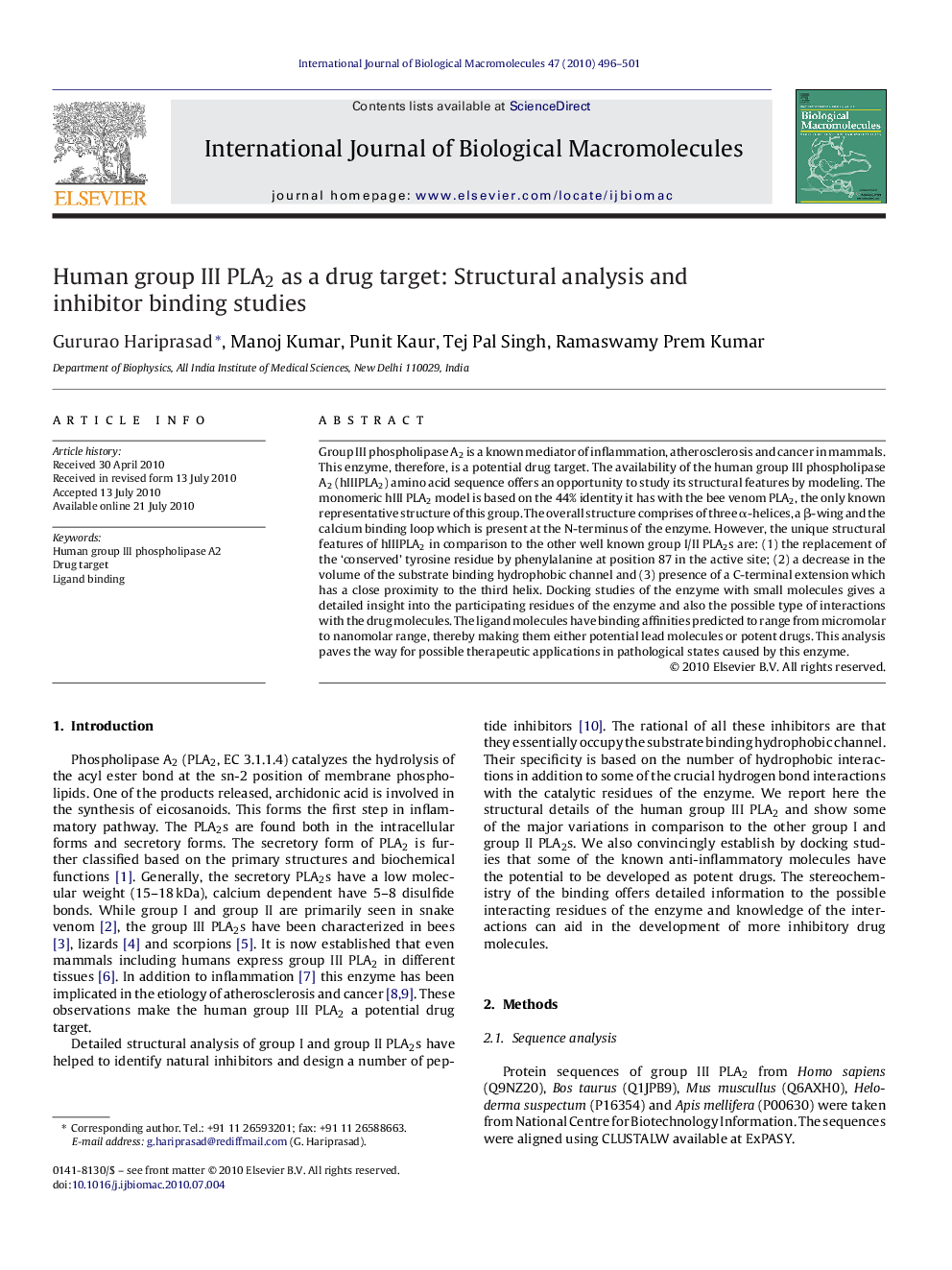| Article ID | Journal | Published Year | Pages | File Type |
|---|---|---|---|---|
| 1987544 | International Journal of Biological Macromolecules | 2010 | 6 Pages |
Group III phospholipase A2 is a known mediator of inflammation, atherosclerosis and cancer in mammals. This enzyme, therefore, is a potential drug target. The availability of the human group III phospholipase A2 (hIIIPLA2) amino acid sequence offers an opportunity to study its structural features by modeling. The monomeric hIII PLA2 model is based on the 44% identity it has with the bee venom PLA2, the only known representative structure of this group. The overall structure comprises of three α-helices, a β-wing and the calcium binding loop which is present at the N-terminus of the enzyme. However, the unique structural features of hIIIPLA2 in comparison to the other well known group I/II PLA2s are: (1) the replacement of the ‘conserved’ tyrosine residue by phenylalanine at position 87 in the active site; (2) a decrease in the volume of the substrate binding hydrophobic channel and (3) presence of a C-terminal extension which has a close proximity to the third helix. Docking studies of the enzyme with small molecules gives a detailed insight into the participating residues of the enzyme and also the possible type of interactions with the drug molecules. The ligand molecules have binding affinities predicted to range from micromolar to nanomolar range, thereby making them either potential lead molecules or potent drugs. This analysis paves the way for possible therapeutic applications in pathological states caused by this enzyme.
